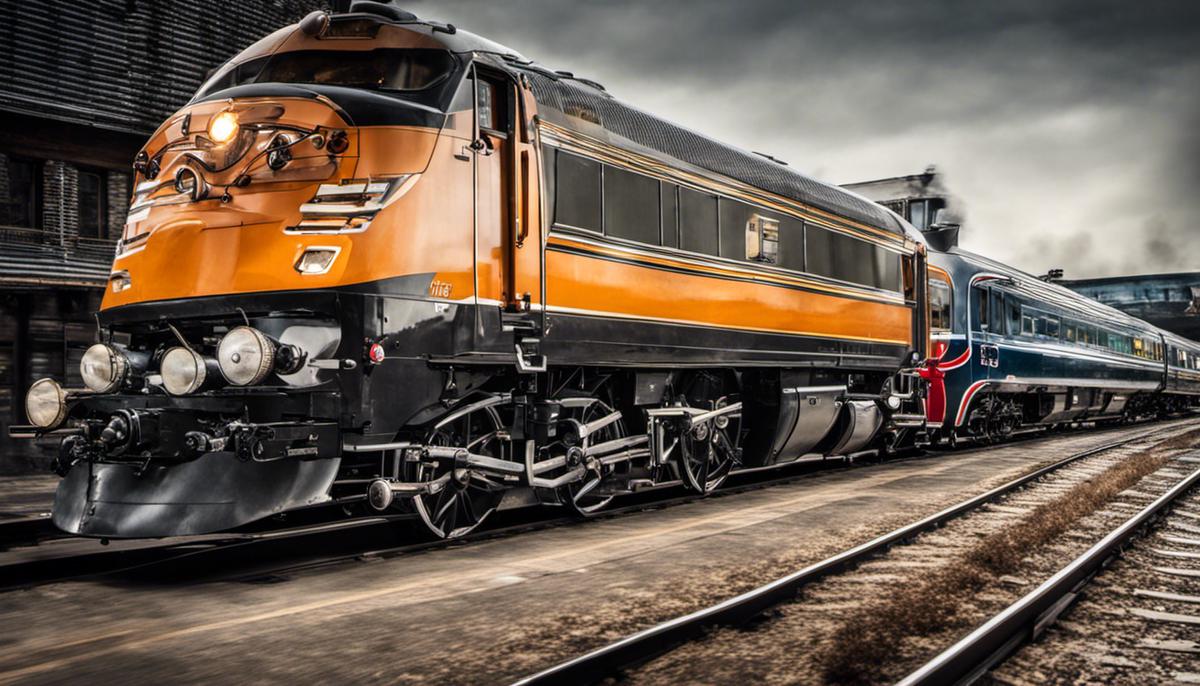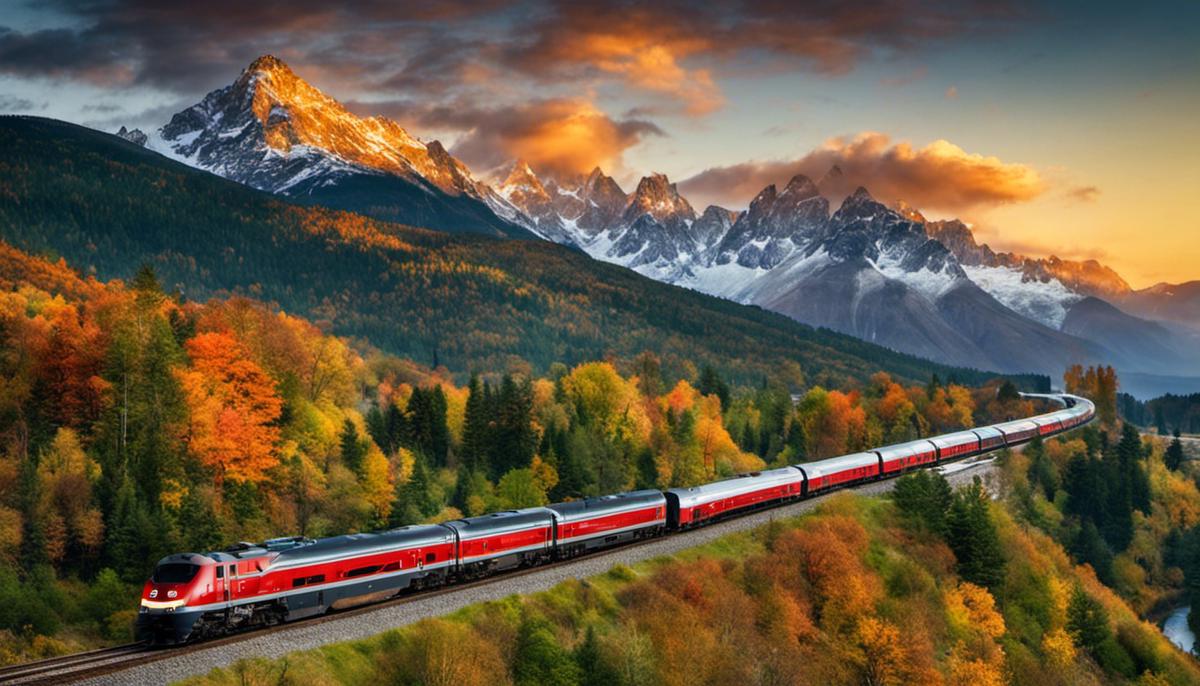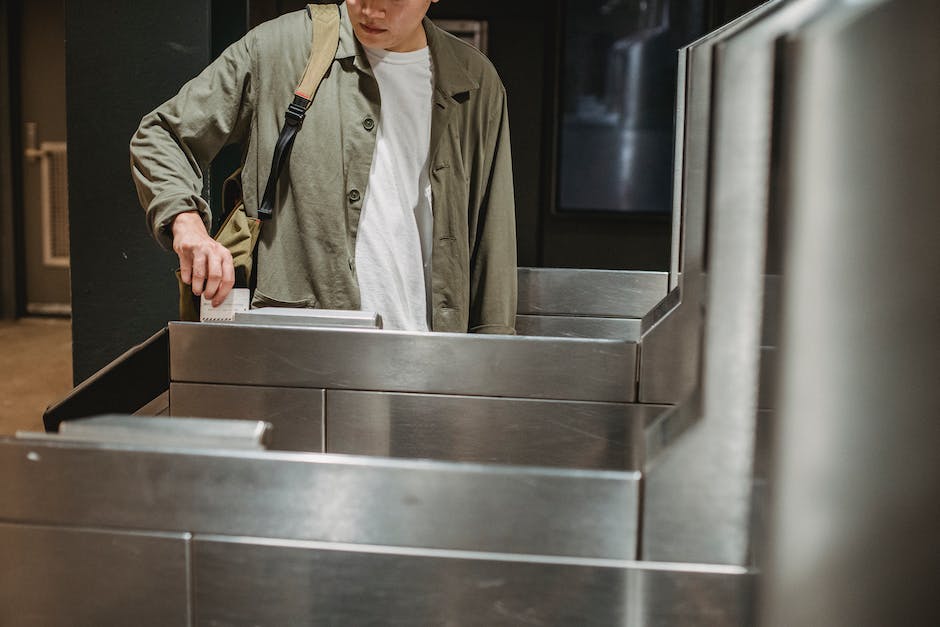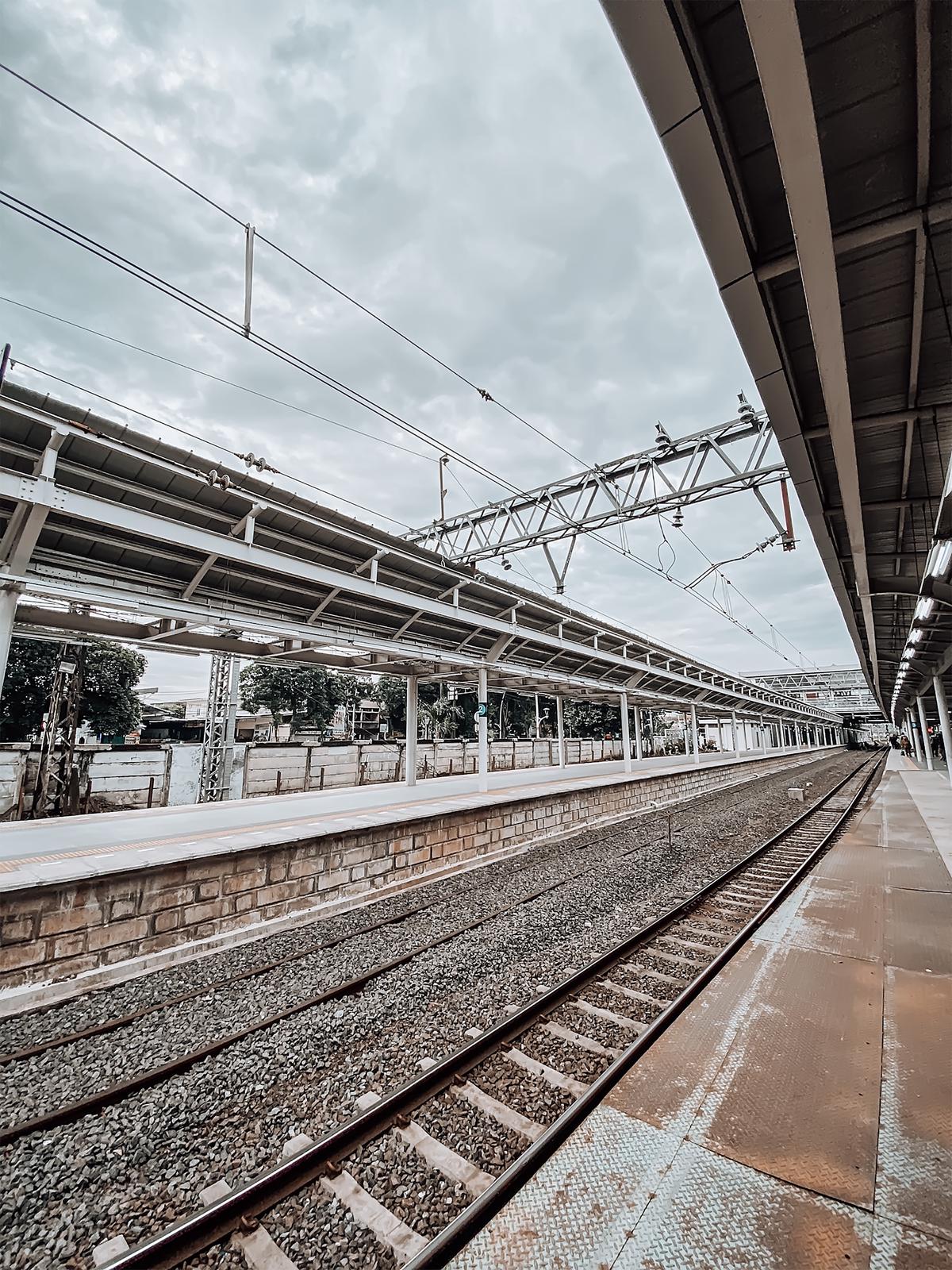Whether it’s the rhythmic clatter of wheels on tracks, the scenic landscapes whisking by, or simply the romance associated with the old-fashioned charm of train travel – there’s a lot to be said about journeying by rail. However, much like any form of travel, taking the train can be daunting if you’re setting off without proper preparation and understanding of all the intricacies involved, from selecting the right service to comprehending safety guidelines. This guide aims to equip potential train travelers with comprehensive insights into different aspects of train travel – beginning with understanding different train services, working through route planning and ticket booking, and culminating with comprehension of train station facilities and train travel safety measures.
Understanding Different Train Services
Understanding Commuter Trains
Commuter trains, often referred to as suburban trains, are designed to transport large numbers of passengers to and from urban centers. These trains are particularly popular in metropolitan areas and are often utilized by daily commuters as the name suggests. They are generally characterized by their frequent stops, making them more suited for short to medium-distance travels. While they may lack the luxury and amenities of long-distance trains, they’re known for their efficiency and cost-effectiveness.
Exploring Long-Distance Trains
Long-distance trains are intended for journeys that span several miles, often across multiple states or even countries. They typically offer more in terms of comfort and amenities including dining cars, sleeper accommodations, and sometimes even private suites. These trains are an excellent choice for those who prefer a more relaxed and scenic journey. However, they are usually slower than other train services, making them less suitable for urgent travels.
Discovering High-Speed Trains
High-speed trains are prominent in countries like Japan, France, China, and are now increasingly prevalent in the United States. These trains are designed to move at incredibly high speeds, thereby significantly cutting down long travel times. While they prioritize speed, they don’t compromise on comfort. Most high-speed trains are equipped with comfortable seating, wireless internet, and power outlets. These are perfect for long-distance journeys when time is of the essence.
Understanding Scenic Trains
Scenic train services offer a unique, immersive travel experience, typically characterized by picturesque routes passing through mountains, lush landscapes, or fetching coastlines. While they may not provide the fastest mode of transport, they do offer a unique vantage point for sightseeing. Such trains usually come equipped with panoramic windows, open-air viewing platforms, and sometimes dining facilities. This type of service is best suited for leisure travelers, photographers, and nature enthusiasts looking for a memorable journey rather than a swift one.
Identifying Luxury Train Services
Luxury train services such as the Orient Express or the Rocky Mountaineer offer the ultimate travel experience, combining comfort, fine dining, personal service, and stunning landscapes. These trains cater to high-end tourists and offer luxurious accommodations, gourmet dining, and often include off-train excursions. Although considerably more costly, luxury trains offer an unparalleled experience that connects you to the golden age of rail travel.
Reviewing Night Trains
Night trains are long-distance services that are designed for overnight travel. These trains usually offer sleeping compartments, ranging from simple bunks to luxurious suites. Night trains are an excellent option for travelers wanting to save on accommodation costs while maximizing their travel time. Moreover, they often cover routes that are scenic, allowing passengers to wake up to breathtaking views.
Researching these different train services and understanding what each offers in terms of speed, comfort, and routes will assist you in planning your journey more effectively. Whether it’s a quick commute, a luxurious journey through breathtaking landscapes, or a time-efficient long-distance journey, knowing your options will help you make the best choice for your travel goals.

Route Planning
Step 1: Identify Your Destinations
Determine the towns, cities, and scenic routes you would like to see during your train trip. Consider and prioritize vistas, sights, or locations you most desire to visit.
Step 2: Research Train Routes
After identifying the areas you wish to visit, look into the different train services that operate in and around these areas. This research can easily be conducted online or by contacting travel agencies. Be sure to explore different agencies, as some may offer routes that others don’t.
Step 3: Evaluate Routes and Schedules
Once you have found the train services that cover your preferred destinations, carefully examine the various routes, schedules, and frequency of the trains. Take note of any changes you may need to make if your chosen destinations are not covered by a single train route.
Step 4: Consider the Direction of Travel
The order in which you visit certain locations matters, especially if you want to enjoy specific views. Trains often pass through different landscapes, and the views from the window can greatly differ depending on the direction of travel. Make sure to check which side of the train to sit on for the best views.
Step 5: Assess the Cost
Verify the cost of the tickets for your chosen routes and compare this with your budget. Keep in mind that some train services offer discounts for multi-leg journeys or round-trip tickets, whereas others may charge more for long-distance travel or luxurious facilities onboard.
Step 6: Check Reviews
Look online or ask around for reviews on the routes offered by the different agencies. These reviews offer a glimpse into the quality of service and the overall experience on the trains. The enjoyment of your trip is paramount, so it’s worth putting in the time to find the best-rated options.
Step 7: Reserve Your Tickets
Once you have made a final decision based on all the information gathered, proceed to book your tickets either online or at the train station. Booking in advance can save you from disappointments especially if you’re travelling during the peak season.
Remember, the key to a successful train trip is thorough planning and flexibility. Enjoy the experience and the change of scenery, it’s not just about the destination, but the journey itself.

Ticket Booking Tactics
Understanding Different Ticket Types
There are several types of tickets available depending upon your needs, including single ticket, return ticket, weekly ticket, monthly ticket, group ticket, and more. A single ticket allows you to travel from one place to the stated destination, while a return ticket gives you the option of travelling to your destination and back. A return ticket often costs less than two single tickets. A weekly or monthly ticket is a good option if you travel along the same route frequently. Group tickets are ideal if you’re travelling with a group and want the convenience of a single purchase, and these tickets may come with a discount.
Where to Book Tickets
Tickets can be booked physically at ticket counters at the stations or through online platforms. You can also book tickets via phone, mobile applications, or through travel agencies. Nowadays, most people prefer booking online because of its convenience and the options to compare prices between different train services.
How to Book Tickets
Booking tickets typically requires you to select your departure and destination stations, then choose the date and time of travel. Following this, select your seat and class of travel. Lastly, provide your personal details including name and contact information. If you book tickets online or through mobile applications, you will likely need to pay through digital methods like credit cards, debit cards, or internet banking. If you opt to book physically at ticket counters, you can pay through cash, credit cards, or debit cards.
Best Ticket Booking Tactics
Booking tickets can require a specific approach to score the best deals:
- Advance booking: You can usually find the best fares if you reserve your seat in advance. As the travel date approaches, ticket prices tend to increase.
- Off-Peak Travel: If you’re flexible with your travel schedule, booking during off-peak times can lead to significant savings. Off-peak times are usually after rush hour and in the middle of the day, later in the evening, or during weekends and holidays.
- Booking during Offer Periods: Occasionally, train services offer promotional discounts during certain periods. Keep an eye out for these deals.
- Leveraging Membership or Loyalty Discounts: If you travel frequently, it might be a good idea to join a loyalty or rewards program. Accumulated points can be redeemed for future travel or upgrades.
- Comparison Shopping: When you book tickets, compare prices with other trains as well as other booking websites. Price variation can occur based on train type (express, normal, etc.), time of the train, or between different booking websites.
Remember, the goal is developing the right strategy for your particular needs. Understanding ticket types, where and how to book tickets, and the tactics to get the best deals can ensure a hassle-free train travel.

Understanding Train Station Facilities
Understanding Different Train Station Facilities
Luggage Storage Facilities
Most train stations provide luggage storage services, usually found in lockers and luggage rooms. Sizes and availability may vary, and fees often depend on the size of the luggage and duration of storage. It’s best to locate these facilities upon arrival to avoid carrying heavy bags around the station, especially during longer layovers.
Accessibility Options
Almost all train stations accommodate accessibility needs. You will often find options like accessible parking areas, elevators, ramps, and accessible bathroom facilities catering to individuals with disabilities. Some stations might even offer wheelchairs or mobility scooters. I would highly recommend contacting the train station or visiting their website beforehand to ensure they meet your specific requirements.
Refreshments
Nearly all train stations offer refreshment facilities. Countless stations, particularly the larger ones, have cafes, snack bars and sometimes full-scale restaurants where you can grab a quick bite or a sit-down meal. Also, vending machines, offering an array of snacks and drinks, are a common sight. Checking out the station’s facilities for eating and drinking can help you plan your meals during your trip, especially if you have a long journey ahead.
Other Facilities
Other facilities might include Wi-Fi access, which can be crucial for those looking to catch up on work or stay entertained during their journey. Stations often offer seating areas where you can relax before your departure. Many train stations also have tourist information centers, perfect for those who might be new to the area or are looking for sightseeing tips.
Additional Services
Some train stations offer additional services such as currency exchange booths, ATMs, and even shopping outlets. If you’re traveling internationally, the ability to access such services might be beneficial.
By acquainting yourself with these facilities and services, you can ensure a more seamless and comfortable trip. It eliminates unexpected challenges and ensures you’re able to plan and utilize your time more effectively.

Travel and Safety Guidelines
Understanding Travel Rules on Trains
Trains are governed by a specific set of rules and regulations to ensure the safety, comfort, and enjoyment of all passengers. It’s vital to understand these rules before embarking on a train trip. For instance, always have your ticket ready as it will have to be displayed or scanned both when boarding and during the journey. Also, many trains have designated quiet cars where silence is paramount, so be aware of this if you’re in such a section.
Luggage Restrictions and Guidelines
Train companies have clear luggage restrictions and guidelines in place. Normally, each passenger is allowed to carry two personal items and two larger luggage items with specified size and weight limits. Anything larger or heavier may incur additional charges, if allowed at all. The luggage must not block aisles or other passengers’ seat areas. If security checks become necessary, be prepared to open all your bags.
Safety Guidelines on Trains
Every passenger must remember and follow specific safety guidelines while traveling on trains. Stay seated while the train is in motion, unless it’s necessary to move. Hold onto handles or seatbacks while moving about the cabin. Wear appropriate footwear to reduce the risk of slipping or tripping. Do not lean on doors or stick body parts outside the train. Always wait until the train has come to a complete stop before attempting to board or alight.
Late-Night Travel Safety
For those traveling late at night, it’s crucial to take extra precautions. Keep valuables out of sight and avoid displaying expensive items such as laptops or cameras. Sit near other people, preferably in a well-lit area. Always be aware of your surroundings and know where the emergency call points are located. If you feel uncomfortable, move to a carriage with more passengers.
Train Emergency Procedures
Knowing what to do in the event of an emergency on a train is key. Each train carriage will have emergency instructions and escape route maps posted. Familiarize yourself with these. In most cases, you’ll be instructed to pull the emergency brake cord if the train needs to stop immediately. It’s critical that these emergency systems are used only in real emergencies, as misuse can result in fines.
Behavior Etiquette on Trains
Like any other public places, trains have accepted behavior norms. Keep conversations at a reasonable volume, don’t play loud music and if you need to make a phone call, do so quietly. Give up your seat for elderly, pregnant, or disabled passengers when the train is crowded. Leave seats clean and dispose of trash in the appropriate receptacles. Respecting fellow passengers makes a train journey enjoyable for everyone.

This guide has aimed to pour light on the often overlooked aspects of train travel. We explored different train services classified by speed, comfort and routes, and likewise understood the art of crafting a route plan to fit personal preferences in cities or views. Demystifying ticket booking processes and providing an overview of varied facilities at train stations was another task undertaken. The guide also emphasized the importance of adhering to the safety regulations and protocols laid down by train authorities, essential for a worry-free and enjoyable journey. Whether you’re inclined to discover new landscapes or pursue the practicality aspect of commute, knowing how to plan your train trip efficiently can greatly enhance your whole experience, turning the journey into as much of an adventure as the destination itself.
Discover Writio – the AI content writer transforming websites! This amazing page was written by Writio.
